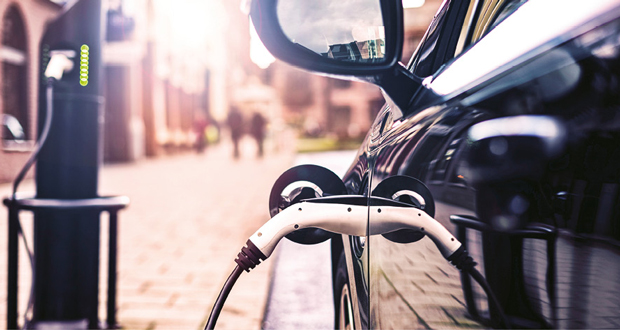Approximately 70 per cent of the UK’s non-residential building stock was constructed before the year 2000. According to the Green Building Council, if the UK’s 2050 net zero targets are to be met, improved energy efficiency and reductions in embodied carbon will be needed, requiring much of the sector to undergo some form of retrofit by 2050. What more can the built environment do to help meet this challenge?
 THE CARBON EFFICIENCY EXPERT’S VIEW
THE CARBON EFFICIENCY EXPERT’S VIEW
GILBERT LENNOX-KING,
CO FOUNDER AND CEO OF CONSTRUCTION CARBON
For many years there has been a focus on operational carbon emissions. While this is good and admirable there is a big blind spot that is not being accounted for.
It is easy to pick the things that are convenient to believe. I for one, have spent most of my working career working in energy efficiency for buildings. Of course, it is important to reduce operational emissions, but more recently when I started digging into the facts in more detail it became clear to me that the industry has huge, embodied carbon emissions that must be accounted for in any property Net Zero strategy.
Simply, the stuff that makes up a building makes up most of a building’s emissions over it’s lifecycle. This makes Net Zero emissions commitments that ignore these emissions hollow.
And yet, we see this. How many developers are tracking embodied carbon emissions across their portfolios in development and in use?
Particularly for facilities managers and asset managers, how many developers are tracking the emissions for the stuff involved with fit outs? Carpet, raised floor systems, ceiling tiles, HVAC systems, portioning walls, all the things that regularly get ripped out and replaced. Is this another situation where we ignore it because it is not seen as completely the landlord or the occupier’s problems? (it’s both).
The trouble is, the problem is too big to ignore. As can be seen in pie charts from the RICS professional statement on how to calculate whole life emissions, whole life embodied carbon emissions make up the majority of a building’s lifecycle emissions.
As the charts suggest, with offices and warehouses, where embodied in use emissions may make up 30 per cent of an asset’s whole lifecycle emissions, how can these be ignored?
Without doubt, the growing increase of net zero commitments has resulted in confusion in the market. This prompted the Whole Life Carbon Network (WLCN) to publish their net zero carbon definitions document. This is being updated by the Net Zero Carbon Buildings working group, but right now is the best we have. This sets out several important definitions.
What we should all be aiming for is net zero (Whole Life) Carbon. Whilst there are increasing and laudable net zero commitments, they are often incomplete and leave out the tricky bits for many asset managers and developers. According to the WLCN: “A ‘Net Zero (Whole Life) Carbon’ Asset is one where the sum total of all asset related GHG emissions, both operational and embodied, over an asset’s life cycle (Modules A1-A5, B1-B7 (plus B8 and B9 for Infrastructure only), C1-C4) are minimised, meet local carbon, energy and water targets, and with residual ‘offsets’, equals zero.”
Of particular relevance to Facilities Managers is the in-use part of this definition.
Yes, most of the focus has been on the operational emissions, but with an increased scrutiny and recognition that the ultimate goal is net zero whole life carbon, this is something that cannot any longer be ignored.
 THE DIGITAL POWER EXPERT’S VIEW
THE DIGITAL POWER EXPERT’S VIEW
KASIM MOHAMMED,
VP DIGITAL ENERGY AT SCHNEIDER ELECTRIC
Buildings have the power to bring about better – using technologies and materials that deliver enhanced usability – safety, security, and sustainability. Creating a net zero building ecosystem requires us to take a two-pronged approach. Firstly, ambitious pragmatism in mitigating the problems of the existing building stock. Secondly, turning aspirational future-gazing into immediate action for new buildings.
The International Energy Agency tells us that 50 per cent of the world’s current buildings will still be in use in 2050 – many have lifetimes of a century or more. Retrofitting existing buildings with net-zero technologies must become standard right now. At its most basic, this means moving from fossil-fuel-based heating and power to renewable sources – a move that building owners should have already taken. However, we don’t want basic; we need better.
Better means using intelligent digital technologies to drive efficiencies through insight.
Sensor, IoT (internet-of-things) technologies are now part and parcel of many new builds and can be easily retrofitted within older buildings to deliver actionable insights on inefficient energy use. IoT energy management systems allow facility managers to make informed decisions. A step further, these choices are automated based on AI. For example, weather prediction software can automatically regulate building operations according to the upcoming weather patterns. Such insight can also enhance building experiences for users – monitoring room capacities, air, and lighting quality, amongst many other comfort factors.
Whether a building is old or new, there are opportunities for it to be digitally retrofitted to become both smart and sustainable, with benefits that even go beyond reaching net-zero.
If achieving net zero is possible in those built decades ago, surely we should be aiming higher for those built today or over the next 20 years? Combining the potential of IoT technology with the development in self-healing buildings is an exciting and potentially game-changing prospect.
Energy positive buildings – those that create more energy than they use through renewable means – are a different matter. New buildings fitted with wind or solar energy generating capabilities are even acting as microgrids, producing enough energy to power themselves and other buildings in their vicinity. Not only does this provide green energy, but such microgrids can also ensure resilience in the face of broader grid failures. For building owners, combining energy procurement and efficiency can turn a building’s energy management into an asset rather than an expense.
What can we do right now to achieve sustainable ambitions? For our older buildings, retrofit with today’s technologies as a priority to meet net zero as quickly as possible. For new buildings, we need to aim even higher. Reset efficiency goals from net zero to energy positive. Go beyond better and choose best.





